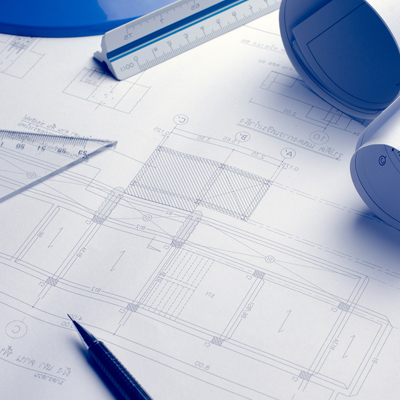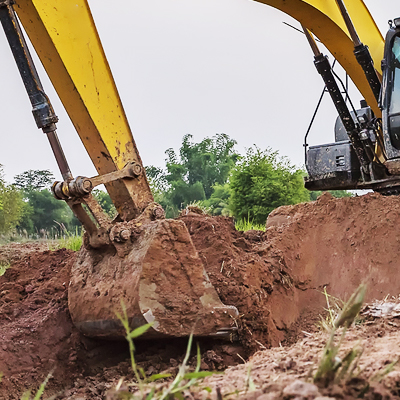Permeation Grouting
Permeation Grouting is the most common and oldest form of soil grouting. The technique consists of drilling a hole in the soil, inserting an injection pipe into the ground and then pumping any number of liquefied materials into the problem area. they How the hole is drilled, what type of injection pipe is used and what material is used are all determined by the specifics of the repair being performed.
This type of grouting is typically limited to sandy soil conditions since this type of soil allows the grout to permeate more readily over a wider area.
Cement Grouting, the most common form of Permeation Grouting, is the injection under pressure of pumpable Portland cement based grout into a soil or rock formation to fill voids or fractures in the formation. For example, if a large concrete floor slab were tilting to one side, a grout pipe could be installed under the low side of the slab where the tilt was occurring. Grout could be injected under the slab that would act like a "hydraulic jack" that could then raise the slab back to it's desired angle.
In other common applications, the grout is injected, into rock fractures to improve the stability of the rock formation. This is commonly used for pre-construction site improvement, to arrest foundation settlements, stop rocking slabs in warehouses, repair fractures in machine bases, rectify sinkhole problems, lift and level slabs and foundations and to control soft-ground settlements in granular soils.
Chemical Grouting is another common form of Permeation Grouting that has gained popular acceptance to strengthen granular soils is the injection of chemical solution grouts that bond the individual grains together into tone like masses that are capable of carrying loads of the structures. The chemical solutions typically consist of a base material that is mixed with a hardening agent that causes the mix to harden at a predetermined rate, depending on the compounds used and length of set time desired for a particular application.
Chemical grouting is also commonly extensively used in leaking subterranean structures, to control water flow, and to limit ground movement during excavation and construction ( lagging operation), as well as for footing support, grouted tunnel support and for pit excavation below water.
This type of grouting is typically limited to sandy soil conditions since this type of soil allows the grout to permeate more readily over a wider area.
Cement Grouting, the most common form of Permeation Grouting, is the injection under pressure of pumpable Portland cement based grout into a soil or rock formation to fill voids or fractures in the formation. For example, if a large concrete floor slab were tilting to one side, a grout pipe could be installed under the low side of the slab where the tilt was occurring. Grout could be injected under the slab that would act like a "hydraulic jack" that could then raise the slab back to it's desired angle.
In other common applications, the grout is injected, into rock fractures to improve the stability of the rock formation. This is commonly used for pre-construction site improvement, to arrest foundation settlements, stop rocking slabs in warehouses, repair fractures in machine bases, rectify sinkhole problems, lift and level slabs and foundations and to control soft-ground settlements in granular soils.
Chemical Grouting is another common form of Permeation Grouting that has gained popular acceptance to strengthen granular soils is the injection of chemical solution grouts that bond the individual grains together into tone like masses that are capable of carrying loads of the structures. The chemical solutions typically consist of a base material that is mixed with a hardening agent that causes the mix to harden at a predetermined rate, depending on the compounds used and length of set time desired for a particular application.
Chemical grouting is also commonly extensively used in leaking subterranean structures, to control water flow, and to limit ground movement during excavation and construction ( lagging operation), as well as for footing support, grouted tunnel support and for pit excavation below water.


